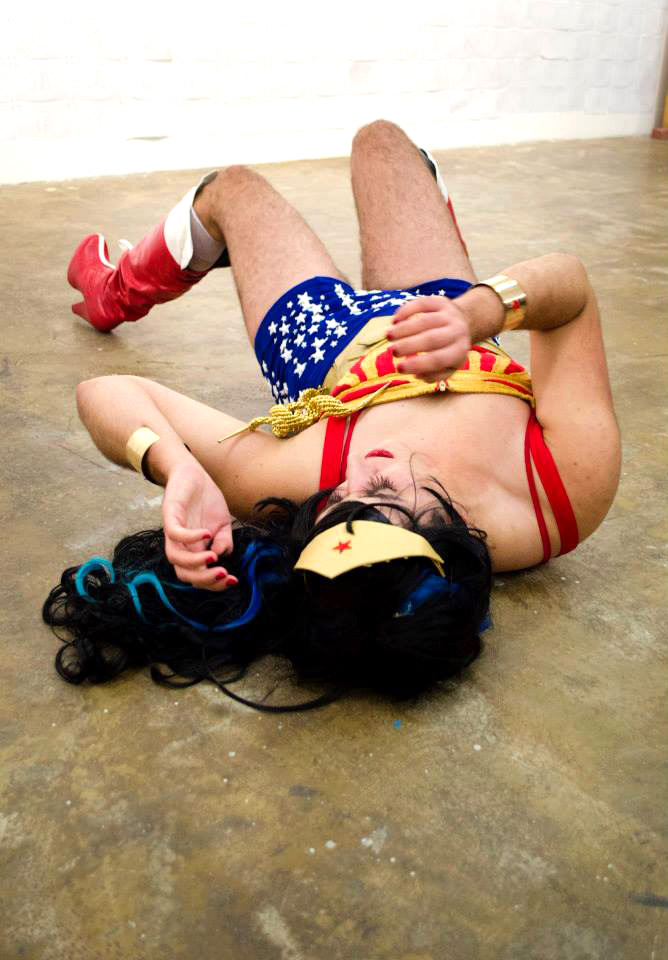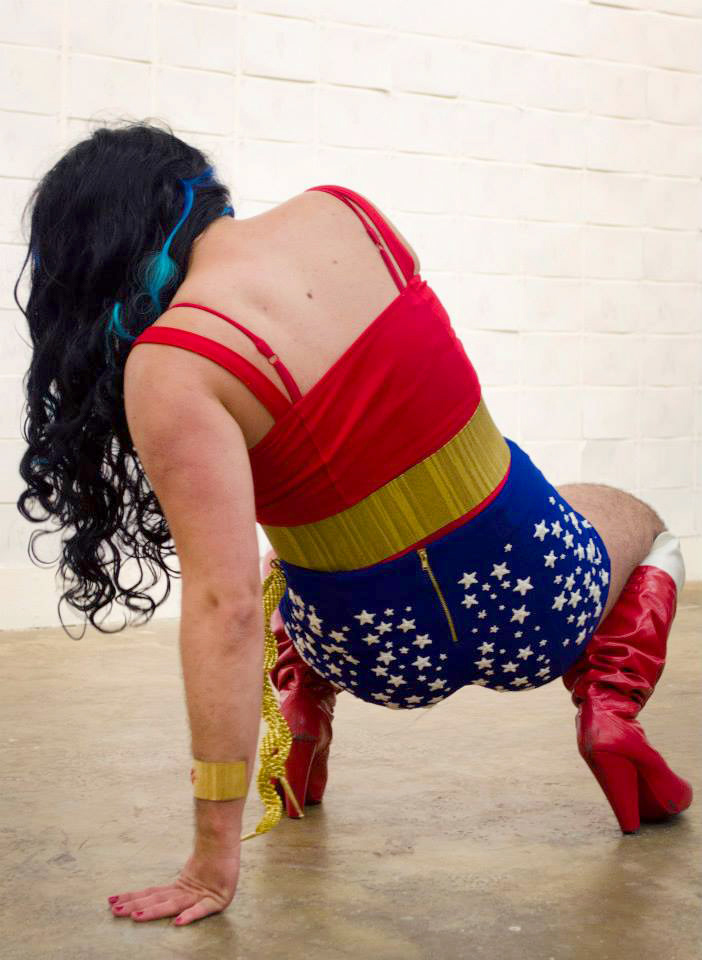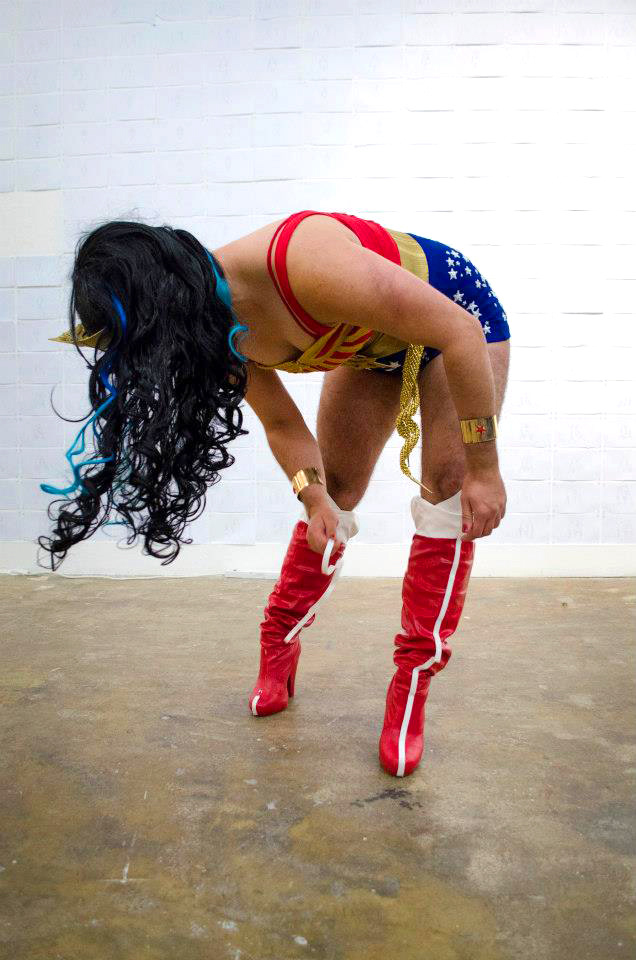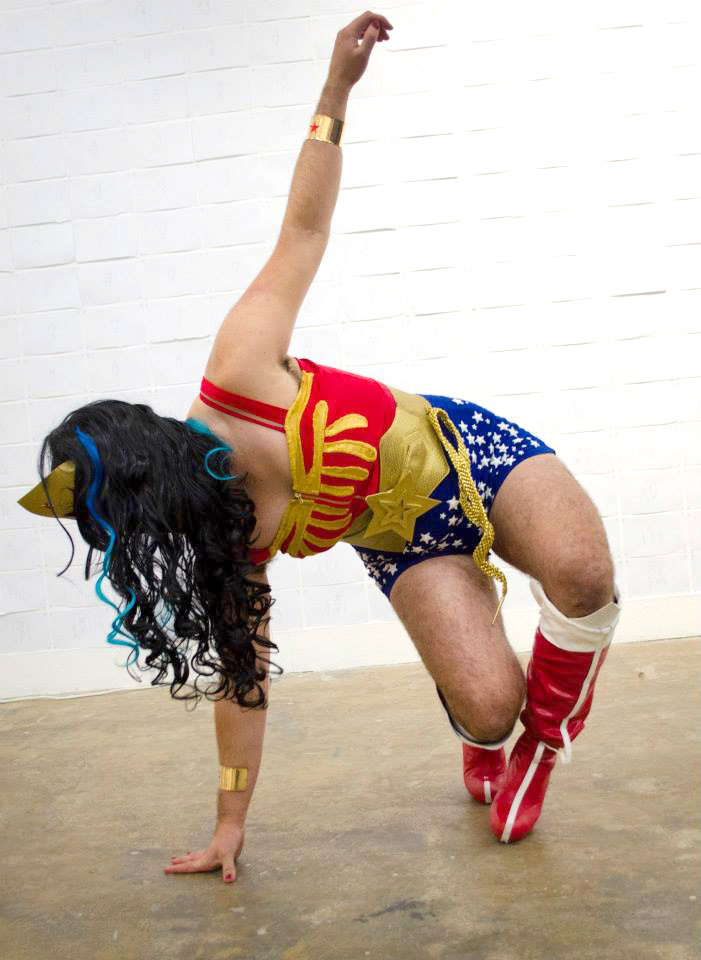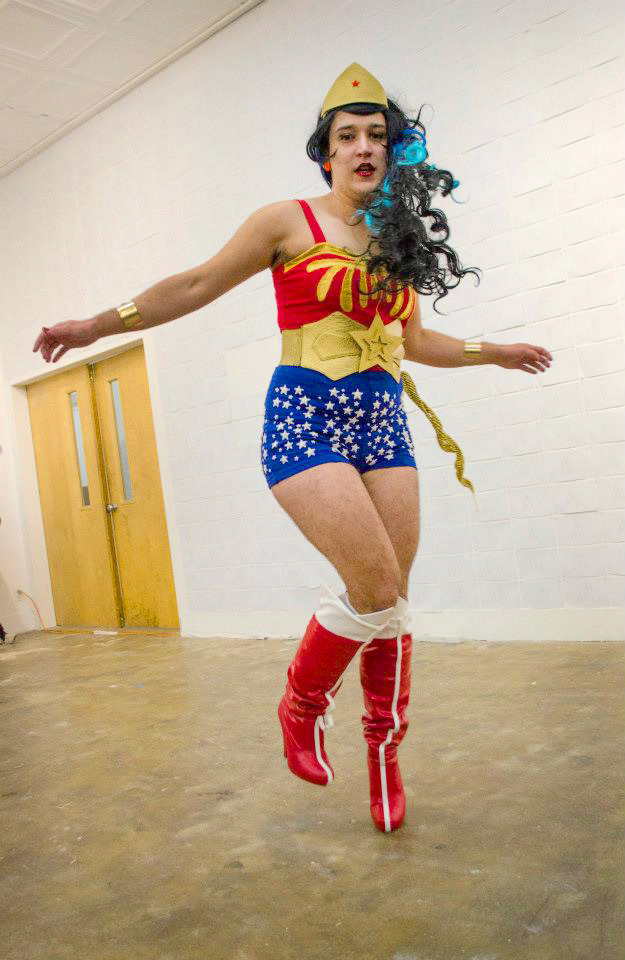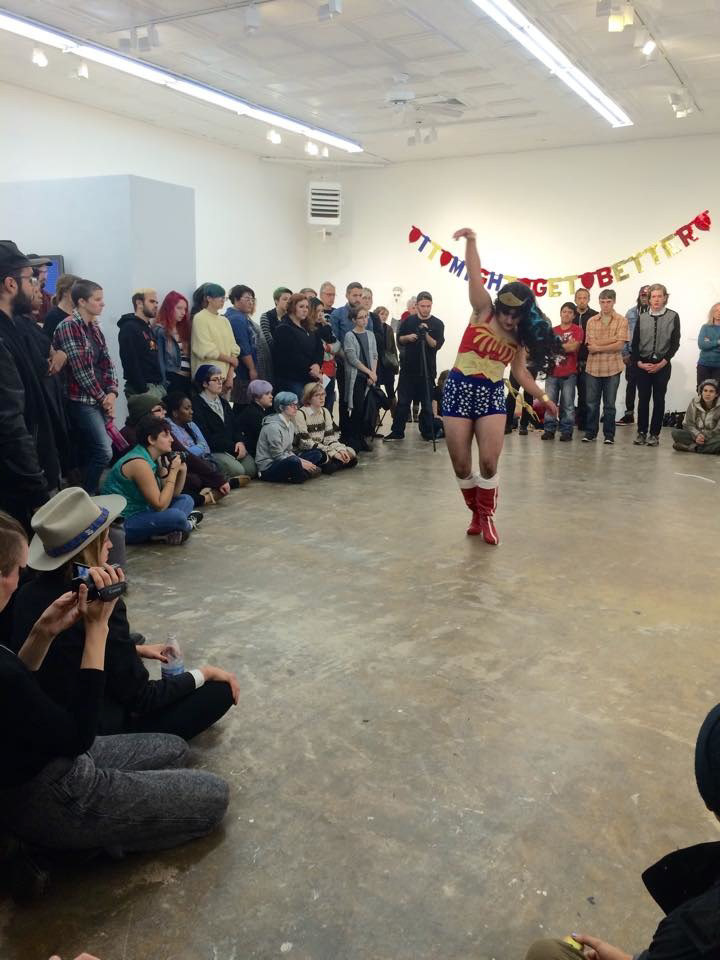As a queer artist I seek to create a temporal historical rupture and point backwards to forms of historical queerness. By engaging in the art of queer craft aesthetic, I hand crafted my own version of a Wonder Woman costume. During the performance They Wonder I repeatedly spin around and around in circles. I am interested in the continuous action of spinning and getting no-where, falling down and getting back up. This specific action of spinning comes from Dara Birnbaum’s Technology/Transformation: Wonder Woman (1978). Birnbaum appropriates and edits footage from the1970’s TV show of Lynda Carter as "Wonder Woman" whirling around and around. Clair Bishop states in Radical Museology, that artist must not bend to the pressures of commodification, “but that they mobilize the world of visual production to inspire the necessity of standing on the right side of history.” They Wonder goes against the populist template of art as a form of leisure or entertainment. Comic Books have always revealed themes and characters that can be identified as queer, the majority of superheroes always live two lives, one as hero and one as civilian. They Wonder performs this doubling. After the performance is complete I change out of my costume. Audience members fail to recognize me as Wonder Woman.
“They may not be worshipped, but they have not been forgotten, and that itself is a start.”
- Wonder Woman
“They may not be worshipped, but they have not been forgotten, and that itself is a start.”
- Wonder Woman
"You think about the Lynda Carter Wonder Woman -- the way she would transform from everyday Diana Prince to Wonder Woman was simply by spinning around," Benedetti says. "And Sarah Hill was thinking about that as they created this work, because it's very much about this constant performance and the fact that it's not so easy to simply transform into something else or someone else."
~ Bryan Rindfuss (San Antonio Current)
~ Bryan Rindfuss (San Antonio Current)
